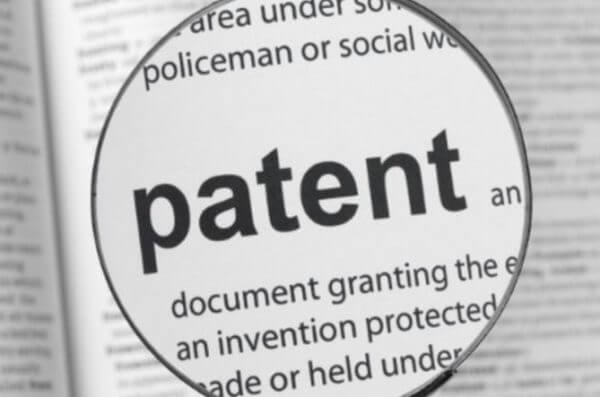This article has been written by Shoronya Banerjee from Amity University, Kolkata. This article delves into certain fields that have found the relevance of patents to be extremely important.
Table of Contents
Introduction
A patent is synonymous to a unique and exclusive right conferred upon an inventor as per laid laws and rules, allowing him/her to exclude or include other people from using, imitating or selling his or her invention in the territory of that country during the longevity of that patent. But in association to this if any prior rights already existed connected to related inventions that too cannot be overlooked. It is usually notified to the individual inventor and following the trends, the employees usually accredit their inventions to their employer. It is available for any product, method, and design is associated with requirements of uniqueness, novelty, purpose and usage.
The source of safeguarding an invention of any product, design, formulation and method according to specific guidelines of originality, suitable conditions etc. Usually, a patent protects an invention for 20 years. In association to laws specific to certain countries, patent rights don’t apply for certain products as well.
For instance under UK laws, finding scientific theories, mathematical methods, presentation of information, dramatic and musical acts, and so on, are not patentable. Under Canadian law, if the Commissioner is not satisfied that a patent is not to be granted to an applicant then it can be refused and such other laws.
Patents
The granting of patents that protect inventors and their inventions is a very complex matter. It stops others from utilizing the inventions of someone else to gain profit and commercial name. The first patent was issued to a German for building a model of a mill and the first English patent was granted to John of Utynam for his creative making of stained glass extending to 20 years. While the French system developed a system introducing registration and examination and also establishing the importance of it. In the background of the Indian scenario, protecting inventions on the standards set by British Patent Law in the name of Act VI, 1852 was widely followed. Inventors were granted with Patents for a period of 14 years. This Act was modified and changed to Act XV which was further modified and renamed into the Patents and Design Protection Act, 1883 which with time was further named as the Protection of Inventions Act,1888 and from here the Indian Patents and Designs Act had traced its way out in the future.
When discussed about the types of patents, the basic and common patents that are widely mentioned are, utility patents, plant patents, design patents and provisional patents:
- One of the most common types of patent, the utility patent protects methods of constructing or formulating something, composition ingredients, manufacturers that come up as a new idea and are useful, etc. In the same way, if an existing process, the composition of a product or similar things are changed and improved upon, a utility patent can be obtained for such a work as well. Methods relating to the way of doing something that is usually for a technical, industrial or commercial purpose. Composition refers to constituting ingredients helping in the construction of a product or substance. New technologies, internet-based software, etc has indeed issued a threat to the boundaries of products protected by utility patents.
- Design patent also known as the “surface ornamentation” of an object, requires the design to be inalienable from the object. Such a patent protects the product’s presentation. It was seen in the case of Sears, Roebuck & Co. v. Stiffel Co, the respondent had obtained a design patent for a pole lamp that had received a great amount of success in the market The petitioner began to sell a similar item for a lower price causing loss to the respondent. An action of patent infringement was brought against the petitioner. The petitioner was forbidden to sell the lamps and was asked to pay damages to the respondent.
- New and different plants are protected by plant patents. But such plants cannot be reproduced from tuber, has to be discovered in a cultivated state, produced asexually which is a proof of the applicant producing the plant and such set other boundaries and limitations., and so on.
Current issues and emerging issues related to Patents
Scope of patent protection
Patents that are known to protect the inventors and their inventions also have boundaries and limitations for their application. It has scope for granting protection and establishing the legitimacy and genuineness of the patents. The scope can include:
- Geographical scope: The size and number of patents increase the worth and scope of intellectual property protection. A patent can only be protected in a specific country other than the one where it has received it if a huge number of patents is traced back to the same priority document or valid member of the patent family. Patents valid only in a particular small geographical area confers a small geographical scope of patent protection which considering the international market is nothing. On the other hand, a large family and number of patents imply higher costs during filing for it and maintaining its fees.
- Related to the content or composition: The claims with a stronger base provide a more strict intellectual property right which is assessed by the content of the article. The structuring of the claim and the relation shared by it with several and more patent families provides a better scope of patent protection for it. Usually, one patent indicates the protection of one invention but related applications to that same patent prevent competitors from even coming near it.
- Innovation in drug industries: The Agreement on Trade-Related Aspects of Intellectual Property Rights (TRIPS) establishes a new sphere of intellectual property rights concerning the health sector. The member states of the World Trade Organization (WTO) formulate their patents and other IPR laws in consideration with the requirements and provided laws. But yet these member states have to follow the TRIPs agreement. The TRIPs agreement provides several opportunities, for instance, compulsory licensing, negotiating with patent holders for giving the lowest price, and so on.
Issues in the field of biotechnology
- Patent laws apply to all innovations related to the field of technology. Bio-technology has become an essential part of our economy with inventions and developments in pharmaceutical science, energy, and environment sectors and, so on, related to which patent laws are equally applicable as well. Being an extremely research-intensive industry it involves the companies investing maximum revenue in research, development, and more exorbitant costs in the case of manufacturing and developing new products and ways of operation.
- But on the contrary, imitating such products would involve low costs. When a company invests in such a research project alongside the high risks involved in it and the expectations of the years’ worth research leading to valuable and exclusive innovations with high market value, the menace of imitation becomes a great problem for the company.
- Patent Laws here does away with the possibilities of competitors taking to imitating products. Sometimes biotechnology firms come up with ingenious inventions, protect it by patent laws, and provide a license for it to larger companies with the capability of launching it in the market. So these companies earn their revenue based on their capability to develop and the idea and ability to patenting and licensing.
- Complexity steps in with what biotechnology inventions can be patented and what cannot be. The invention has to fill the essentials patentability of a novelty, the unique method involved and, its industrial utility is considered to be basic fulfillment criteria but the debate has risen upon other requirements as well.
- A major focus is also put to ensure that the claims in patent applications do not supersede the matter which is explained by the invention, as divulged in the patent so that no patent owner is given excessive and unjustified rights. This has to be considered not only while drafting patent applications but also formulating research and development plans and strategy, especially when the invention results are essential for the company’s profit margins.
Dimminaco A.G. v. Controller of Patents and Designs & Ors
It was seen in the case of Dimminaco A.G. v. Controller of Patents and Designs & Ors, the petitioner had issued a patent application related to its invention of a method of preparing the infectious Bursitis Vaccine. As under Section 12 of the Patent Act, 1970, laying down the method of examination of such an application, the Patent Office Examiner declared that the application did not constitute any inventions as laid by Section 2(i)(i) of the Patent Act, 1970. It was said that the Patent Applicant’s invention arranged by a particular process was capable of being used as food or a drug, but not as an invention under section 2(i)(i).
It was contended by the appellant that there was no restraint against the method of preparation of a product that was already patented, even if the process constituted live virus, leading the objection under section 2(i)(i) by the Examiner to be unreasonable. It was also said that there was no deterrent as per current laws for granting a patent to a final product involving live virus. The grant of patent affected and denied on the basis of administrative policies would mean the violation of the Rule of Law as no administrative policy can annul the statutory provision. It was held that the patent application had to be reconsidered sooner. Not later than two months from the date of production of this judgment.
Issues of patents in outer space
The United Nation had passed a resolution in 1961 declaring the application of international law on outer space and celestial bodies legitimate and it also made the exploration of outer space and celestial bodies free for all States but in compliance with international law. They are not subjected to national appropriation. Space technology and outer space activities developing with time has shown the requirement of protection in the matter of innovation and new developments as per space research, studies and projects. Space activities slowly inclining towards the commercial and private sphere and the space activities working under international cooperation schemes have further attracted the requirement of patent laws with regard to outer space.
The Treaty on Principles Governing the Activities of States
This Treaty is also known as the Outer Space Treaty provides the groundwork for international space law. While Article II of the treaty states that the moon and other celestial bodies are not subjected to ‘national appropriation’ or any sort of means. Hence outer space is considered to be a public domain with no one nation being able to claim the outer-space or ownership of celestial bodies. But it is also considered under Article VIII that the state with the registration of a space object can have control over that object. But Article VI also puts forth that “the activities of non-governmental entities in outer space, including the Moon and other celestial bodies, shall require authorization and continuing supervision by the appropriate State Party to the Treaty”.
The process utilized for collecting the raw data from the Outer Space with the usage Remote Sensing Satellite is patented as an invention. The technology and method involved is different and varies as per all remote sensing satellites. For the national patent laws being applicable only with respective territories puts forth a problem when new inventions are used or violated in outer space. Even the data collected by these satellites don’t have any copyright protection. But it applies to the final value-added data or the product.
Issues of patents in public health
- Innovations in the field of biotechnology, nanotechnology, pharmaceutical science, and so on have changed the face of the health sector worldwide.
- In the case of improving public health the main aim of the authorities remains to ensure the balance between the inventor’s right on the creation of a product or process to improve the health sector and the way of implementing it for the help and requirement of the general public.
- New drugs, treatment methods, and clinical trials require a lot of investment, patents act like a catalyst making the inventors invest the required amount of money.
- Innovations in the field of biotechnology, nanotechnology, pharmaceutical science, and so on have changed the face of the health sector worldwide. In the case of improving public health, the main aim of the authorities remains to ensure the balance between the inventor’s right on the creation of a product or process to improve the health sector and the way of implementing it for the help and requirement of the general public.
- New drugs, treatment methods, and clinical trials require a lot of investment, patents act like a catalyst making the inventors invest the required amount of money.
- Developing countries often negotiate with the patent holders to provide them with the drugs and apparatus at a low cost. This has happened before when certain companies agreed to help poorer or underdeveloped countries with medicines to treat fatal and severe diseases.
- Public health can be maintained when both the public and private sectors involve each other with the authorities promoting the importance of joint ventures, legalizing innovations, etc.
- The Doha Declaration under paragraph 5(2) says that “freedom to determine the grounds upon which such licenses are granted” and highlights the idea of compulsory licensing.
- Therefore, the Doha Declaration put forth the time when the rights of an inventor could be exclusive, and when it could be abridged to achieve larger public interest.
The field of nanotechnology
Nanoscience is the study related to the rare occurrence and controlling of material measured in nano-scale, for extending the sciences into the nano-scale. Such materials can show variable properties compared to that as shown on a macro-scale. With the help of nanotechnology, materials with specific characters can be formed. The revelation of nanotechnology and developments in it allow the production of such results that are very beneficial for mankind in the future.
The utilization of it to build diagnostic tools, therapeutic micro-tools, electronic components used to create more strong and effective devices and so many more such products can be built to help mankind. New and more developed material could also help in the field of space technology, protection of the environment, forming micro-materials, etc. But here as well the product or process has to be innovative, considered to be novel, and should have commercial and industrial applications.
For instance, it was decided in the Nano-crystalline metals case, that the initial method of passing current at fluctuating interims under maximum density and such timing to set out the deposit nanocrystalline material of less than 100 nm size on the cathode was distinguished from the present claim. The Board also confirms that the inventor could not have anticipated the prior teaching to be successfully extrapolated to structures smaller by at least two orders of magnitude.
Patents required for business development and strategy
With the progressing time protection provided by patents have become immensely important with growing competition in the market and future perspectives of a business. Patents provide the exclusive right to stop a competitor from imitating an innovation for commercial gains. Patent analysis stands to be extremely important for business development as it provides with every information and details of a demanded field of technology and predicts the future market need.
A radical and ‘fundamental innovation’ could establish new markets and provide new industrial spheres as well, whereas ‘improved innovations’ brings forth an upgraded product of better quality and better usage. These are the products with capabilities of meeting a customers requirement and demand henceforth offering the establishment of a new market and business. The existence of business method payments reveals new processes of doing business in compliance with strategies with achieving their set goals.
But laws relating to such patents vary according to countries. For instance, according to Section 3 of the Indian Patent Act, “mathematical method or business method or a computer program or algorithms are not patentable”, unless it solves a technical problem and a new method or process is developed out of it. But India should increase the scope and allow business methods to be patented for gaining the trust of investors to invest in certain projects and strengthen the market.
In the case of Netflix, Inc. v. Blockbuster, Inc, Netflix had 2 patents which were related to the idea of ordering and delivering digital video discs through the internet. Therefore, since 1999 it has rented such discs on subscription basis to its site, www.netflix.com. But the defendant blockbuster had conducted traditional renting of DVDs until 2004, when it launched its “Blockbuster Online” providing DVDs through its websites. Netflix had filed a lawsuit against Blockbuster for infringing its patents. It was held that the court would adjust on its own to eliminate distortions or impose clarifications that can be required in further proceedings.
Conclusion
With time the awareness of intellectual property rights has become path-breaking, acting like an incentive to stimulate inventive behaviour and innovative activities of man along with supporting the economy. Alongside conferring exclusive rights on the inventor, patents also help in returning the amount invested in the whole process of research, development, and production. It grants an inventor the benefit of enjoying a monopoly. Patents are given in exchange for new inventions.
Though India has stepped into the field of product patent regime it still has a long way to go in case of managing the interests of the companies and maintaining a balance. India still has great hurdles to cross like that of implementing the TRIPs agreement to achieve institutional reforms, building technical capability, etc. TRIPs agreement promotes foreign direct investment, usage of genetic resources, environment protection, and so on. India must promote the formation of an association between the Convention on Biological Diversity and TRIPs to bring forth more opportunities for the patent offices. Patenting should involve an intelligent strategy working side by side with the inventions that are to be implemented.
References
- https://www.mondaq.com/india/patent/366752/business-method-patents
- https://www.mondaq.com/patent/795336/supreme-court39s-recent-decisions-on-enforcement-of-utility-model-patents
- https://www.iusmentis.com/patents/claims/
- https://www.forbes.com/sites/stephenkey/2017/11/13/in-todays-market-do-patents-even-matter/#45bb241356f3
- https://www.pulj.org/the-roundtable/emerging-issues-related-to-patents
- https://smallbusiness.findlaw.com/intellectual-property/types-of-patents.html
LawSikho has created a telegram group for exchanging legal knowledge, referrals and various opportunities. You can click on this link and join:
 Serato DJ Crack 2025Serato DJ PRO Crack
Serato DJ Crack 2025Serato DJ PRO Crack











 Allow notifications
Allow notifications



